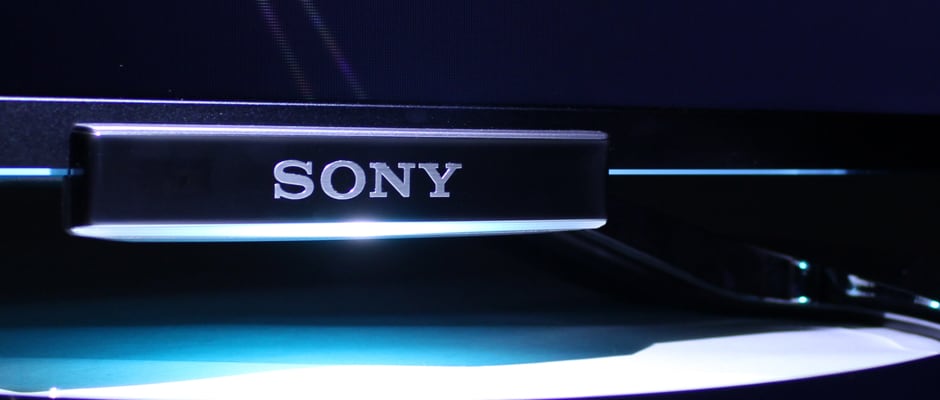Pros
Cons
Overview
In terms of internet connectivity: not really. Sony is still playing catch-up with its smart platform—even though it is an improvement over last year’s iteration. In terms of picture quality, however, the Japanese electronics giant has produced an excellent display. In addition to its killer design, the W900A comes with incredible color accuracy and customization galore.
TV nerds and deep-pocketed buyers alike will fall in love with this one.
Design
Much like the mid-tier W802A, but with quality
When I reviewed the mid-tier W802A (which has a decidedly high-end price tag), I fell in love with its design. Its slim profile and thin bezels—complete with a teal-blue strip surrounding it—gives the W802A a touch of sophistication. Sony’s unique circular stand also adds to the appeal.
So why spend so much time talking about the W802A? Because the W900A looks identical to it, except for one key detail: build quality. My only real gripe with the W802A was its cheap, plasticky construction, but the W900A mostly corrects this. Gone is the chintzy backside, which is replaced with lightweight metal. The stand, though, still feels cheap. Maybe Sony should take a page out of Panasonic’s playbook and start using way more metal. Yes, it can be heavier, but for the exorbitant price, consumers deserve better quality.
Speaking of quality, Sony packaged a new remote with the W900A. The strikingly handsome One Touch NFC remote is what we like to call Sony’s “smart” remote. Most high-end TVs come with some kind of smart remote that does additional functions aside from power and volume control. The One Touch remote has your basic TV buttons—although an input button is frustratingly missing—and includes an NFC tag that allows you to mirror content from your Xperia phone to your TV. Unfortunately, I don’t have an Xperia phone, nor does anyone in the office, and this feature will not work without one. Still, this remote is a looker.
{{photo_gallery "design"}}
Interface & Smart Features
The menu interface is an upgrade, but the smart features still aren’t quite “smart”
Kudos to Sony for completely dumping its archaic XMB (XrossMediaBar) interface, which it used on its 2012 smart TVs. The PS3 uses the same interface—and it works well coupled with a controller—but Sony’s new menu style just seems tailored for a television: simple and to the point.
Don’t confuse “simple” for “dumbed down,” though. Just take a look at some of the options Sony offers within its picture menu:
And not only are picture options easier to find—smart features are too, although you shouldn’t get too excited yet. Pressing the SEN (Sony Entertainment Network) button on either of the included remotes takes you to Sony’s refreshed smart platform, which is a screen with a smattering of apps. All the big boys are there, like Netflix, Amazon, Hulu, and YouTube, but don’t expect anything beyond apps. Yes, Sony makes a big deal about smartphone interactivity, but unless you own one of its Xperia products, you won’t be able to take advantage of this feature.
For a full breakdown of Sony’s 2013 smart platform, check out our article here.
{{photo_gallery "interface"}}
Performance
A true powerhouse
Let’s get this out of the way: The W900A continues a long tradition of Sony TVs with poor viewing angles. A “poor” viewing angle simply means decreased contrast when viewed from an off-angle, which leads to a less detailed picture. You will absolutely be able to see content on the W900A’s screen from a wide angle, but don’t expect it to blow you away.
Now that we’ve got that out of the way, let’s discuss everything else, because this Sony does everything else so well.
The W900A has some of the best color accuracy we’ve seen in a television. Reds, greens, blues, and white look exactly the way they should, and content will benefit from this. There are no unnaturally vibrant reds or blues to be found… unless you want that. Sony has an option called “Live Color” which exaggerates the TV’s colors. If that makes you happy, go for it. For picture purists, though, the W900A’s colors are fine without this option.
Contrast is also a delight on this display. Don’t expect the same inky black levels that Panasonic’s ZT60 has—try as it might, the W900A cannot reproduce those. You will find that its black level is decent, and coupled with an extremely bright white level, this Sony can produce a fantastic contrast.
For all the praise we heaped on this TV’s color and contrast, we need to point out its impressive motion performance. Without any motion enhancement settings on, performance is about average for an LCD. Sony bundles plenty of options, and most give way to the dreaded Soap Opera Effect. One setting, called Impulse, produced perfect motion performance... with a few caveats. In Sony’s words, the Impulse setting is a “[T]rue reproduction of original picture quality. Flicker may appear.” This setting will severely diminish the TV’s brightness (and also the black level, which is good), but flickering only occurred on screens that were solid white. If a dimmer screen seems like a fair tradeoff for near-perfect motion performance, you'll be pleased with the W900A.
The Finale
Stellar design and stunning picture quality, with the price tag to match
Sony still doesn’t “get it” in terms of smart features, but proves it knows exactly what it’s doing in regards to picture quality. Color accuracy, motion performance, contrast—they’re all superb on the W900A. And don’t get me started on design, which is becoming a staple of Sony’s products.
So what’s there to dislike? As mentioned before, this TV’s viewing angle isn’t terribly wide. Then there’s the whole issue of price: With an MSRP of $3,299.99, the 55-inch W900A is not for those short on cash. As of this review, Sony is selling this display for about $1000 off, which is more likely clever marketing than an actual price drop, but still a more palatable price point. And for $2,299, the W900A is easily worth the price of admission.
Behind the Screens
Sony almost crafted a TV with no major drawbacks. Contrast, motion performance, and color accuracy look terrific on the W900A, although we should point out that its black level won't compete with high-end plasmas. The one blemish on this TV's performance record is its poor viewing angle, which seems to be a staple of Sony displays.
Contrast
A brilliant peak white gives this LED excellent contrast
Sony has a knack for creating bright TVs—just look at its flagship LED from last year, the HX950. While the W900A doesn't get as dazzling as that TV, it still gets brighter than most TVs that we review. Coupled with a decent black level of 0.069 cd/m2 , Sony's new LED achieves a contrast ratio of 5000:1.
We should point out that if you're using the Impulse motion processing mode, it will drastically decrease the W900A's brightness. With this setting turned on, its peak white level of 345 cd/m2 was decreased to 104.9 cd/m2 , although its black level also dropped to 0.026 cd/m2 . This drops the TV's contrast ratio to 4035:1, which is still more than acceptable.
Viewing Angle
You can see the screen from any angle, but you won't want to
Sony is developing a bad track record when it comes to viewing angle. Its 2012 flagship TV, the HX950, tested with a viewing angle of ±11.5° from the center, while the mid-tier W802A has a slightly better viewing angle of ±25°. How did the W900A fare? We tested it as having acceptable viewing of ±12.38° from the center of its screen, which is rather bad. This means that after 12.38°, the TV's contrast ratio drops below 50% of its original value.
Color
Color accuracy worthy of its high price tag
It's rare to find a television that reproduces colors as accurately as the Sony Bravia W900A. Primary colors align almost perfectly with the HDTV standard color gamut, called Rec. 709. Reds are ever-so-slightly oversaturated, while blues are just a smidgen undersaturated—consumers will not notice a difference here. Sony offers an option on the W900A called Live Color, which will expand and oversaturate the primary colors. With colors that look this good, you won't need to use that setting.
The TV's colors look great, transitioning from one hue to the next flawlessly. Every single primary color, including the greyscale, has a smooth transition from one input signal to the next. This means colors are incredibly detailed, in addition to being accurate.
This Sony's color temperature also deserves recognition for being—you guessed it—almost perfect. Color temperature error can give your TV screen a slight orange or bluish hue, but there are almost no visible errors on the W900A. Some of the darker levels spike up in temperature, but it's so minuscule that no one will notice.
{{photo_gallery "color"}}
Meet the tester
An enthusiast of all things tech, Josh is one of Reviewed.com's resident television experts. When he's not looking at bright TV screens in a dark room, he's probably reviewing a laptop or finding a new snack at 7-11.
Checking our work.
Our team is here to help you buy the best stuff and love what you own. Our writers, editors, and experts obsess over the products we cover to make sure you're confident and satisfied. Have a different opinion about something we recommend? Email us and we'll compare notes.
Shoot us an email


